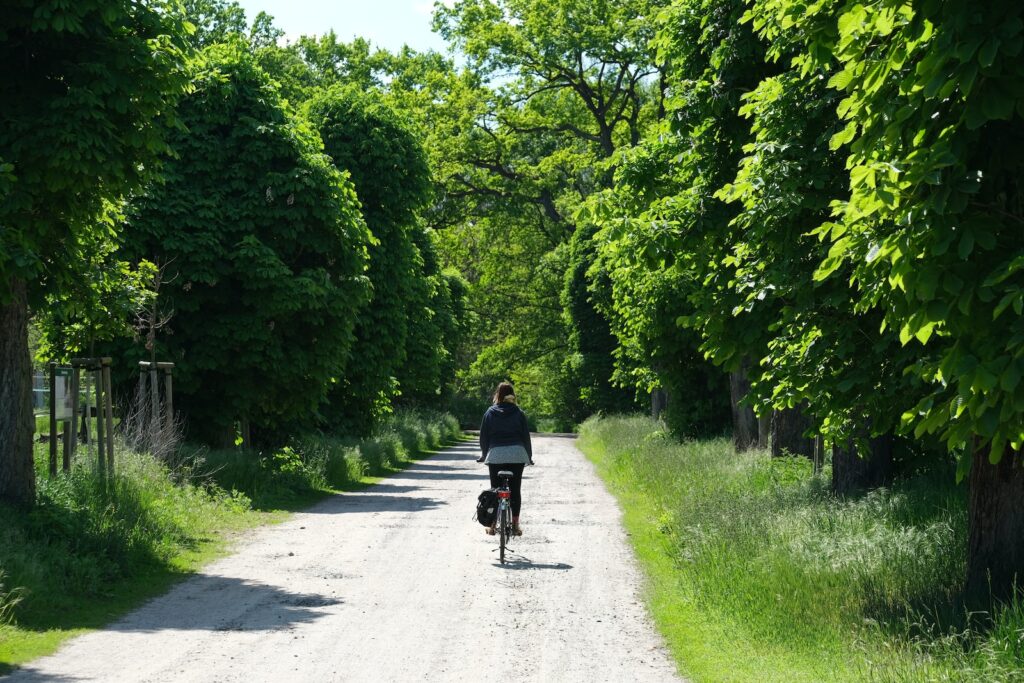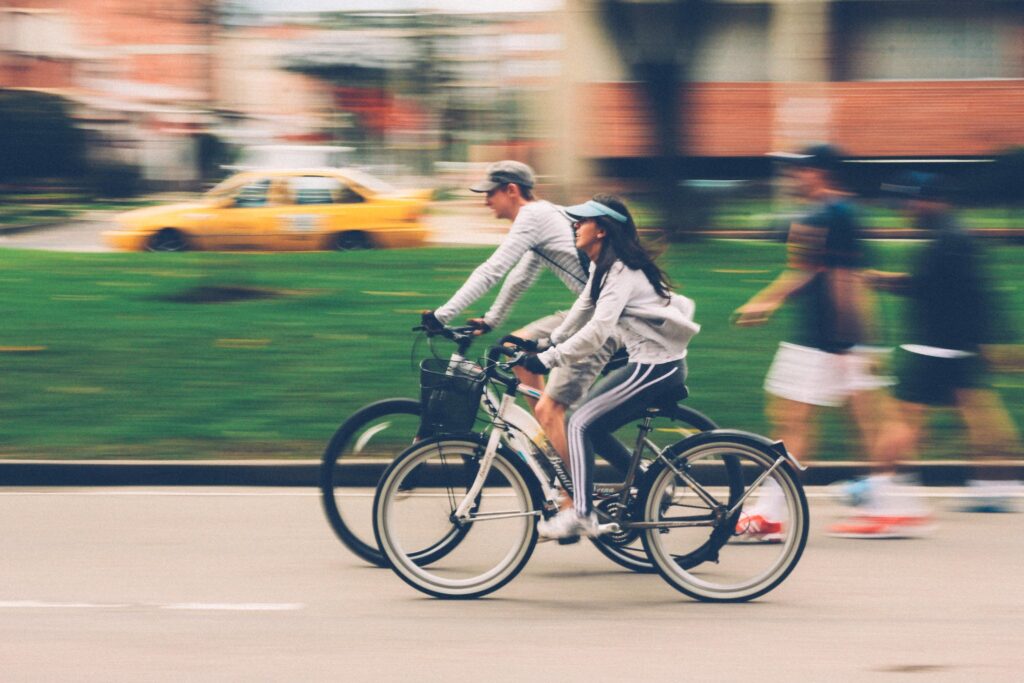As an avid bike enthusiast, having enjoyed the pleasure of riding bikes since the tender age of three and owning around eight different bikes, I have always cherished the freedom and joy that cycling brings. However, it was when I incorporated biking into my daily commute that I discovered a whole new world.
In this comprehensive guide, I have put together some expert bike commuting tips and tricks that will make your life a lot easier. From selecting the perfect bike to mastering the art of route planning, I will uncover the secrets that can transform your bike commute into a seamless and enjoyable experience.
Let’s harness the knowledge and experience I’ve gained over the years to help you navigate through traffic, prioritize safety, and make the most of your time on two wheels.
Table of Contents
1. Choose the Right Bike
So, you decided to embrace your inner Eco-Warrior and now you need a bike to commute. When it comes to bike commuting, selecting the right bike is paramount. It forms the foundation of a comfortable and efficient ride. As you embark on this two-wheeled journey, take into account several factors that will guide you towards choosing the most suitable bike for your commute.
First and foremost, consider the terrain you’ll encounter on your regular routes. Are you primarily cycling on flat city streets, or will you be tackling hilly terrains? Understanding the terrain will help determine the appropriate bike style and gearing options. For urban environments, a hybrid bike or a commuter bike with a comfortable upright riding position might be ideal. On the other hand, if you anticipate traversing rugged terrains or unpaved paths, a mountain bike or a gravel bike equipped with robust tires and suspension may be more suitable.
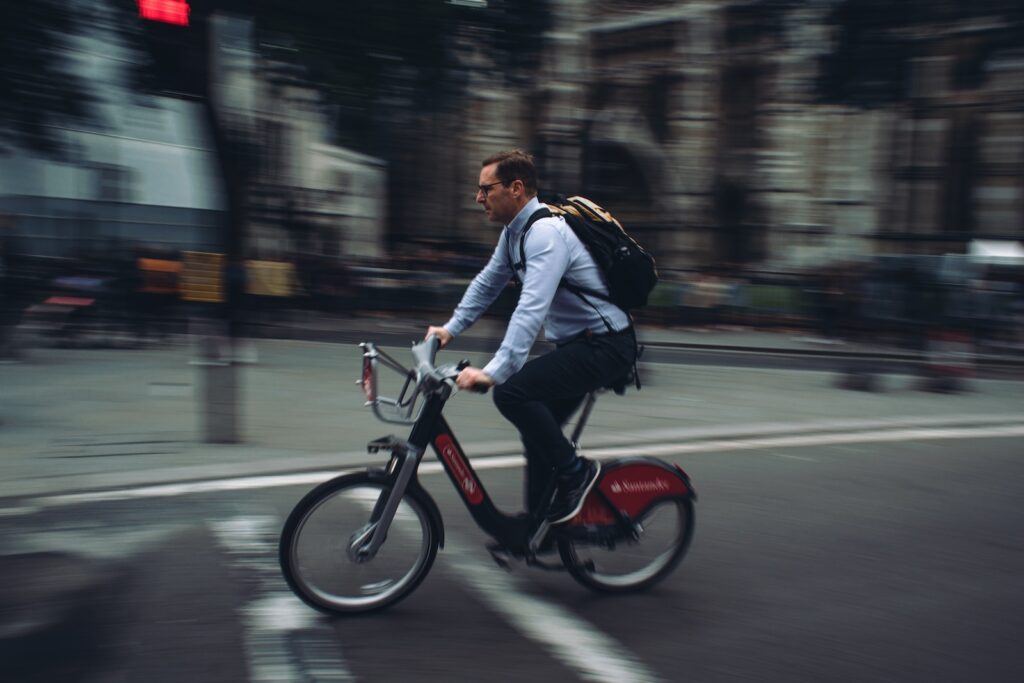
Next, think about the distance you’ll be covering during your commute. If your route is relatively short, a lightweight and nimble bike, such as a road bike or a single-speed bike, could provide a quick and agile ride. However, for longer distances, you may prefer a bike that prioritizes comfort and stability, such as a touring bike or a commuter bike with wider tires for better shock absorption.
Comfort is another crucial consideration. Ensure that the bike frame is the right size for your body proportions, allowing for a comfortable riding position and proper leg extension. Consider features like padded saddles, ergonomic handlebars, and adjustable seat posts to enhance your riding comfort.
By carefully evaluating the terrain, distance, and comfort factors, you can make an informed decision when choosing a bike for your commute. Remember, the right bike will not only enhance your riding experience but also contribute to your safety and overall enjoyment. So, take your time, consult with experts if needed, and invest in a bike that suits your needs and aligns with your bike commuting goals.
2. Plan Your Route
One of the key elements of a successful bike commute is planning your route in advance. Probably you already read about the importance of planing your route on our previous post. By taking the time to strategize your journey, you can avoid traffic congestion, minimize delays, and discover the most efficient path to your destination. To assist you in this process, there are various tools and resources available, such as online maps and dedicated cycling apps, that can be invaluable in navigating bike-friendly routes and bike lanes. Here I recommend Google Maps and Strava.
Before setting off on your bike commute, familiarize yourself with the roads and pathways that will be part of your journey. Identify bike-friendly routes that prioritize safety and efficiency. Online maps, like Google Maps or cycling-specific mapping services, can provide detailed information on bike lanes, dedicated cycling paths, and low-traffic roads. These maps often highlight elevation changes and allow you to compare different route options, enabling you to select the one that best suits your preferences and needs.
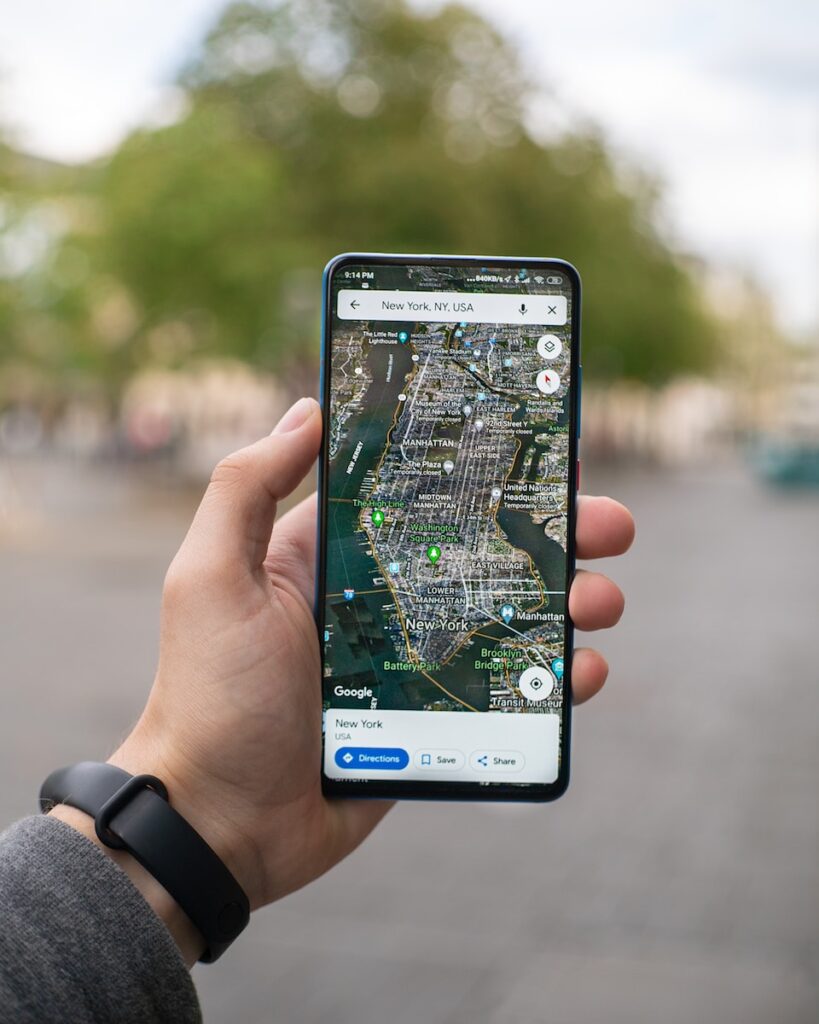
Dedicated cycling apps can also enhance your route planning process. These apps often include features like turn-by-turn navigation, real-time traffic updates, and user-generated reviews of cycling routes. By utilizing these apps, you can access valuable insights from fellow cyclists who have already explored various routes, enabling you to make informed decisions about the most suitable paths for your bike commute.
When planning your route, consider factors such as the distance you need to cover, the expected traffic conditions, and the availability of bike parking facilities at your destination. Aim for a balance between efficiency and safety, opting for routes that prioritize bike infrastructure and minimize potential conflicts with motorized traffic.
By proactively planning your bike commute route, you not only save time and reduce stress but also create a more enjoyable and rewarding experience. So, leverage the power of online maps and cycling apps, take advantage of the wealth of information available, and unlock the full potential of your bike commute.
3. Safety First
When it comes to bike commuting, safety should always be your top priority. By taking the necessary precautions, you can ensure a secure and worry-free journey. One of the most crucial safety measures is wearing a properly fitted helmet. It provides essential protection for your head in the event of a fall or collision. Invest in a high-quality helmet that meets safety standards and ensure it fits snugly on your head, covering the forehead and properly securing under the chin.
In addition to a helmet, wearing reflective gear is vital, especially during low-light conditions. Reflective clothing, vests, or accessories significantly enhance your visibility to motorists, making you more easily identifiable on the road. Opt for reflective materials that illuminate when exposed to vehicle headlights, helping drivers spot you from a distance.
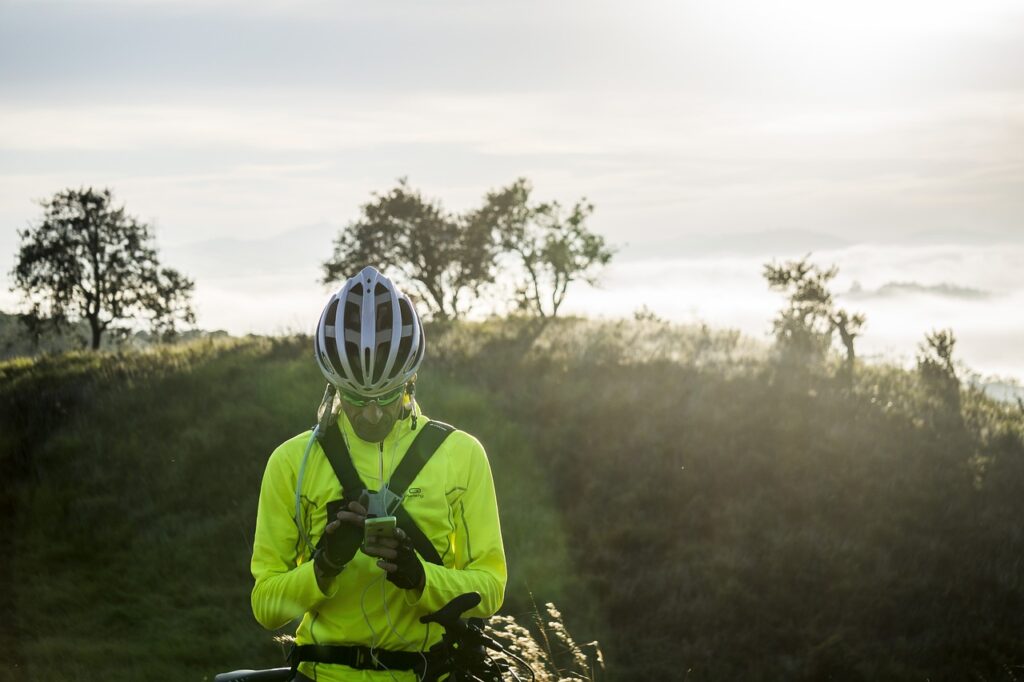
To further enhance your safety, familiarize yourself with traffic rules and regulations specific to cycling in your area. Understand the rights and responsibilities of cyclists on the road and follow the established guidelines. This includes obeying traffic signals, yielding to pedestrians, and using hand signals to indicate your intentions to motorists. Knowing the rules of the road not only keeps you safe but also promotes harmonious interactions with other road users.
Practicing defensive cycling techniques is another essential aspect of bike commuting safety. Be alert and attentive while riding, anticipating potential hazards and being prepared to react swiftly. Maintain a safe distance from parked cars to avoid opening doors and watch for turning vehicles at intersections. Constantly scan your surroundings, checking for approaching vehicles or pedestrians, and adjust your speed and position accordingly.
By prioritizing safety through helmet usage, reflective gear, understanding traffic rules, and practicing defensive cycling, you create a secure environment for your bike commute. Remember, safety is a responsibility shared by all road users, and by setting a positive example, you contribute to a culture of safe cycling in your community.
4. Bike Maintenance
Proper bike maintenance is essential for ensuring optimal performance and a smooth, hassle-free bike commute. By regularly attending to your bike’s upkeep, you can prevent potential issues and enjoy a reliable ride. There are several key areas to focus on when it comes to bike maintenance.
Start by checking your tire pressure regularly. Properly inflated tires not only provide better traction and handling but also minimize the risk of flats. Use a tire pressure gauge to ensure that your tires are inflated to the recommended PSI (pounds per square inch) indicated on the sidewall of the tire. Adjust the pressure as needed, considering factors such as your weight and riding conditions.
Next, pay attention to your bike’s brakes. Inspect the brake pads for wear and ensure they make proper contact with the rims when engaged. If the brake pads are worn out or not gripping effectively, replace them promptly to maintain reliable stopping power. Additionally, check the brake cables for any signs of fraying or tension issues. If necessary, adjust or replace them to guarantee responsive braking.
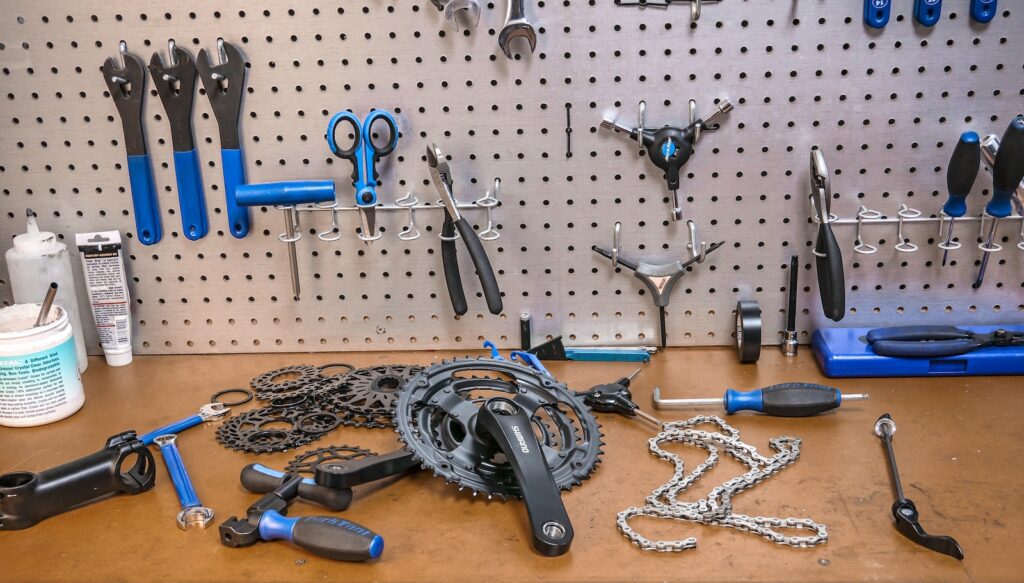
Regularly monitoring and maintaining your bike’s gears is also crucial. Ensure that the chain is properly lubricated for smooth shifting and pedaling. Clean the chain regularly to remove dirt and grime buildup, then apply a suitable bike chain lubricant. Test the shifting by cycling through the gears, making any necessary adjustments to ensure precise and smooth gear changes.
Keeping your bike clean is not only aesthetically pleasing but also helps prolong its lifespan. Regularly wipe down the frame, handlebars, and other components, removing dirt, debris, and corrosive substances. Pay special attention to the drivetrain, as a clean and well-lubricated chain ensures efficient power transfer.
By dedicating time to regular bike maintenance, you not only enhance the longevity and performance of your bike but also promote a safe and enjoyable bike commuting experience. Remember, a well-maintained bike is a reliable companion on your daily journeys, allowing you to focus on the road ahead and enjoy the ride.
5. Pack Smart
When embarking on your bike commute, it’s important to pack smart and be prepared for any unexpected situations that may arise along the way. By carrying essential items and using the right gear, you can ensure a smooth and stress-free journey.
One of the key items to have with you is a well-equipped repair kit. This should include a spare tube, tire levers, a multi-tool with wrenches and screwdrivers, and a small pump or CO2 inflator. These tools will come in handy for addressing minor repairs, such as fixing a flat tire or making adjustments to your bike’s components. Familiarize yourself with how to use these tools and practice changing a tube before your commute, so you can confidently handle any tire-related issues that may occur.
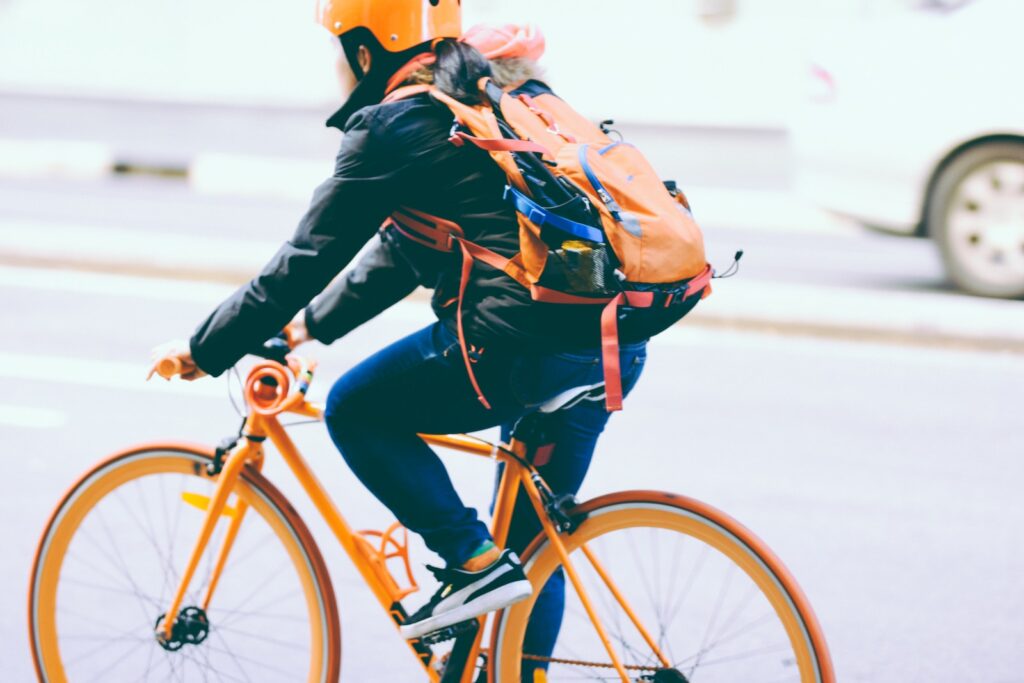
In addition to the repair kit, consider using panniers or a backpack to securely transport your belongings. Panniers are bags that attach to your bike’s rack, providing ample storage space for items like a change of clothes, work essentials, or groceries. They distribute the weight evenly, reducing strain on your body and allowing for a more comfortable ride. Alternatively, a backpack with adjustable straps and compartments can also serve as a convenient option for carrying your belongings while keeping them secure and easily accessible.
When packing for your bike commute, think about the specific items you’ll need for your destination. Consider weather conditions, any necessary work materials, and personal items you may require throughout the day. It’s a good practice to pack lightweight and compact items, optimizing space and minimizing the added weight on your bike.
By packing smart and being prepared with a repair kit and suitable storage options, you can navigate your bike commute with peace of mind. Having the necessary tools and gear readily available ensures that you can handle minor repairs on the go and transport your belongings safely and efficiently.
6. Be Visible
Being visible to motorists is crucial for ensuring a safe bike commute. By taking steps to increase your visibility, you significantly reduce the risk of accidents and enhance your overall safety on the road.
One effective way to increase visibility is by using lights and reflectors on your bike. Install a white front light and a red rear light that are both bright and easily visible, especially during low-light conditions or at night. These lights not only help motorists spot you from a distance but also improve your visibility at intersections and when navigating through traffic. Choose lights with different modes, such as steady or flashing, to attract attention and enhance visibility even further.
In addition to lights, wearing bright-colored clothing can significantly enhance your visibility during the day. Opt for colors like fluorescent yellow, orange, or green, which stand out against the surrounding environment. These vibrant hues make it easier for motorists to spot you, especially in busy or congested areas. Consider investing in cycling-specific clothing that incorporates high-visibility elements, such as reflective strips or panels, to further increase your visibility.
To maximize your visibility, it’s also beneficial to add reflective accessories to your bike. Attach reflective stickers or tape to your bike frame, pedals, and wheels to create additional points of reflection. These accessories work by reflecting light back to its source, making you more visible to motorists from various angles. Reflective ankle bands or leg bands can also be effective in catching the attention of drivers, particularly in low-light situations.
Remember that visibility is a key component of road safety, and by making yourself more visible to motorists, you reduce the chances of accidents and improve your overall biking experience. By using lights and reflectors, wearing bright-colored clothing, and adding reflective accessories to your bike, you create a strong visual presence on the road, allowing motorists to anticipate your presence and safely share the space with you.
7. Time Management
Effective time management is key to ensuring a smooth and stress-free bike commute. By allowing extra time and planning ahead, you can navigate potential challenges and arrive at your destination feeling calm and prepared.
When planning your bike commute, consider factors that may affect your travel time, such as weather conditions and traffic. Allow extra time to accommodate any potential delays, especially during inclement weather or peak traffic hours. By factoring in these variables, you can set a realistic schedule that reduces the likelihood of rushing and minimizes stress.
Arriving early has numerous benefits. It not only gives you a buffer in case of unexpected delays but also allows you to start your day in a relaxed manner. By arriving ahead of time, you can take a few moments to freshen up, gather your thoughts, or even enjoy a cup of coffee before diving into your responsibilities. This extra time can help set a positive tone for the day and allow you to transition smoothly from your bike commute to your work or other activities.
Moreover, arriving early provides you with flexibility. If you encounter unexpected challenges along the way, such as a flat tire or road closure, you have the time to address these issues without feeling rushed. This flexibility allows you to handle unforeseen circumstances calmly and find alternative routes or solutions without compromising your schedule or stressing about being late.
To effectively manage your time during your bike commute, consider using time-saving strategies. This may include planning your route in advance to avoid congested areas or utilizing cycling apps that provide real-time traffic updates. These tools can help you identify the most efficient paths and make informed decisions to optimize your travel time.
Remember, effective time management is about prioritizing your well-being and setting yourself up for success. By allowing extra time, arriving early, and incorporating time-saving strategies into your bike commute, you can navigate your journey with ease and start your day on a positive note.
8. Dress Appropriately
Dressing appropriately for your bike commute is essential to ensure comfort and adaptability to changing weather conditions. By choosing the right clothing and accessories, you can make your journey more enjoyable and protect yourself from the elements.
When deciding what to wear, consider the weather conditions for the day. Dressing in layers is a practical approach, as it allows you to adjust your clothing according to temperature changes throughout your commute. Start with a moisture-wicking base layer that helps keep you dry by drawing sweat away from your skin. This layer should be breathable and lightweight, providing comfort during physical exertion.
Next, add an insulating layer, such as a long-sleeved shirt or lightweight jacket, to provide warmth when temperatures are cooler. This layer can be easily removed or unzipped if you start to feel too warm during your ride. Opt for materials that offer both insulation and breathability, ensuring optimal comfort as you pedal.
In case of rain, it’s essential to carry appropriate rain gear. A waterproof or water-resistant jacket and pants can protect you from getting soaked and help maintain your comfort throughout the ride. Look for options that offer breathability to prevent excessive sweating and promote ventilation.
Additionally, don’t forget to protect yourself from the sun’s harmful rays. Apply sunscreen to exposed areas of your skin, even on cloudy days, to prevent sunburn and reduce the risk of long-term sun damage. Choose a sunscreen with a high SPF and water-resistant properties to ensure its effectiveness during your commute.
When it comes to accessories, consider wearing a helmet to protect your head in case of a fall or accident. Ensure your helmet fits properly and is securely fastened. Additionally, wearing gloves can provide both comfort and grip while protecting your hands from cold temperatures or potential scrapes in case of a fall.
By dressing appropriately for your bike commute, you enhance your comfort and adaptability to varying weather conditions. Remember to dress in layers, carry rain gear if needed, and protect yourself from the sun’s rays with sunscreen. By taking these simple steps, you’ll be well-prepared to enjoy your bike commute while staying comfortable and protected.
9. Stay Hydrated and Nourished
Staying hydrated and nourished is crucial for maintaining energy and endurance during your bike commute. By prioritizing hydration and packing snacks, you can ensure that your body has the fuel it needs to sustain you throughout the ride.
Hydration is key, especially during physical activity. Remember to carry a water bottle with you and sip regularly to stay hydrated. Dehydration can lead to fatigue, decreased performance, and even dizziness or cramps. Aim to drink water before, during, and after your ride to replenish lost fluids. If you have a longer commute or are riding in hot weather, consider carrying a larger water bottle or even a hydration pack to ensure an adequate supply of water.
In addition to hydration, it’s essential to nourish your body with appropriate snacks. Pack energy bars, granola bars, or other portable snacks that provide a balance of carbohydrates, proteins, and healthy fats. These snacks can provide a quick and convenient source of fuel, especially during longer rides or when you need an energy boost. Choose snacks that are easy to eat on the go and won’t weigh you down.
Remember, the duration and intensity of your bike commute will determine your nutritional needs. If you have a short commute, you may only need a small snack before or after your ride. However, for longer commutes or intense rides, consider consuming snacks at regular intervals to maintain energy levels.
By staying hydrated and nourished, you support your body’s performance and well-being during your bike commute. Keep a water bottle handy to stay hydrated and pack snacks that provide sustained energy. Taking these steps will help you feel more energized, focused, and ready to tackle your journey.
10. Follow Bike Etiquette
Following bike etiquette is essential for creating a safe and harmonious commuting environment, just like following public transit etiquette. By respecting other cyclists, pedestrians, and drivers, you contribute to a positive and cooperative atmosphere on the road.
One important aspect of bike etiquette is signaling your intentions. Use hand signals to communicate your turns and lane changes effectively. This helps other road users anticipate your actions and promotes overall safety. Raise your left arm to indicate a left turn, your right arm for a right turn, and use a downward-pointing arm to signal a stop or slowdown. Clear and timely signals enhance communication and minimize the risk of accidents.
Yielding to pedestrians is another crucial aspect of bike etiquette. When approaching crosswalks or shared paths, slow down and yield the right of way to pedestrians. Give them ample space and time to cross safely. Being courteous and patient shows respect for their presence and helps maintain a positive relationship between cyclists and pedestrians.
Adhering to traffic rules is fundamental to ensure a smooth and orderly flow of traffic. Obey traffic lights, stop signs, and other regulatory signs, just as you would if driving a car. This helps prevent confusion and potential conflicts with other road users. By following the same rules as other vehicles, you contribute to a predictable and safer commuting environment for everyone.
Remember, bike commuting is a shared experience, and practicing good bike etiquette is crucial for everyone’s well-being. Respect fellow cyclists, pedestrians, and drivers by signaling your intentions, yielding to pedestrians, and adhering to traffic rules. By doing so, you contribute to a safer and more enjoyable commuting experience for all.
Conclusion
Congratulations! You now have a solid foundation of expert bike commuting tips for beginners. By following these guidelines, you’ll unlock safety and efficiency on your daily bike commute. Remember, practice makes perfect, and as you gain experience, you’ll become more confident and adept at navigating the city streets on two wheels. So get out there, enjoy the ride, and make the most of your bike commuting adventures!
FAQ
How long does it take to get used to commuting on a bike?
To make your bike commute easier, start by choosing the right bike for your needs and the terrain you’ll encounter. Plan your route in advance using online maps and cycling apps to find the most efficient and bike-friendly paths. Prioritize safety by wearing a properly fitted helmet, using reflective gear, and practicing defensive cycling. Regular bike maintenance ensures optimal performance, while packing smart with essential repair tools and appropriate storage options prepares you for unexpected situations. Enhance your visibility with lights, bright-colored clothing, and reflective accessories. Effective time management, dressing appropriately, and staying hydrated and nourished also contribute to a smoother and more enjoyable bike commute.
Is commuting by bike worth it?
Commuting by bike can be worth it for many reasons. Firstly, it offers numerous health benefits, including improved cardiovascular fitness and increased physical activity. Cycling also reduces your carbon footprint, contributing to a greener environment. It can save you money on transportation costs, as bikes require minimal maintenance compared to cars and public transportation. Additionally, biking can be faster in congested urban areas, as you can navigate through traffic and bypass parking hassles. Moreover, biking allows you to enjoy fresh air, avoid crowded spaces, and experience a sense of freedom and connection with your surroundings.
Is bike commuting good for weight loss?
Bike commuting can be an effective way to support weight loss efforts. Regular cycling helps burn calories, aiding in creating a calorie deficit necessary for weight loss. It is a low-impact aerobic exercise that engages major muscle groups, promoting muscle toning and increased metabolism. Cycling also improves cardiovascular fitness, which further contributes to weight management. However, to maximize weight loss, it is essential to combine bike commuting with a balanced diet and other forms of exercise. Consistency and intensity are key factors in achieving and maintaining weight loss goals through bike commuting.




